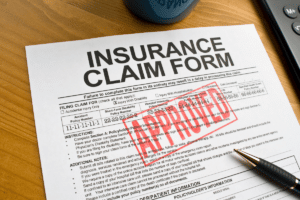If you are a longshore worker and meet the Office of Working Compensation Plan’s (OWCP) standards for coverage under the Longshore and Harbor Workers’ Compensation Act (LHWCA), you are entitled to file for LHWCA benefits if you are injured on the job. In order to receive compensation benefits and medical care, you must follow a precise set of OWCP procedures when filing your claim. Understanding these procedures will help you to begin the LHWCA claim process.

Understanding LHWCA Deadlines
In most cases, within 30 days, you need to report to your employer any injury that causes you to miss one or more shifts. However, there are two exceptions to the reporting period requirement:
- First Exception: The first exception applies if you are injured on the job but are not incapacitated immediately. For example, if you hurt your back while lifting heavy items but are not disabled right away, you should report the injury to OWCP within 30 days after you know, or reasonably should have known, that you lost time from work or became disabled as a result.
- Second Exception: The second section applies to occupational diseases, meaning diseases incurred during work. In these instances, LHWCA permits up to a year in order to file for benefits. However, it’s recommended to stick with the 30-day rule if at all possible. In many instances the laws regarding your illness may be ambiguous, with no certain guarantees that a judge will side with exceptions.
When you file, you should fill out a Notice of Employee Injury or Death report, describing how, when, where, and why you were injured. Be sure to make all claims in writing and keep copies for your personal files. Some employers may attempt to deny that your injury took place, but if you file either an LS-201 or an LS-203 form within the OWCP deadlines, your injury will be on the record.
Keep in mind that even though you may have problems with a benefits claim if you don’t file an injury report within 30 days, the OWCP may not penalize you if you have a good reason. You can still file a claim for medical treatment even if you have not sent an injury report to the OWCP district office.
If Your Claim is Denied
If your compensation starts after you’ve filled out your report, then nothing else needs to be done. However, if your insurer refuses payment, you’ll need to fill out a Longshoreman Claim and request a conference. Even though these conferences are considered informal and will not expedite or solve your benefits issue, it’s a necessary step in the process before going to a formal hearing. The Longshoreman Claim form should always be mailed to the Office of Workers’ Compensation Programs in your area.
The purpose of the informal claims process is to get the recommendation of a claims examiner so that you can move onto the next step. Once you’ve received written recommendation from the claims examiner, you’ll then be able to request a hearing. Keep in mind, however, that hearings take place only if your claim is denied.
Hearings typically take place before a federal Administrative law judge, and several aspects of your issues will be discussed, including the significance of your injuries, how long you’ve been injured, how you were injured, and more. For more detailed information on hearings, see our article LHWCA Hearings.